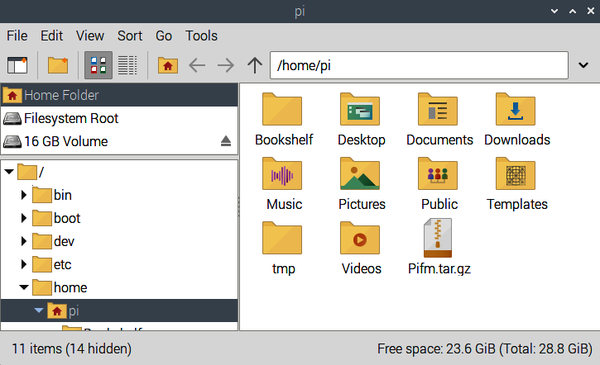Chapter 3. Operating System
3.0 Introduction
This chapter explores many aspects of the Linux operating system used by the Raspberry Pi. A lot of this involves the use of the command line. If you are used to Windows or macOS, this can come as a bit of a shock. However, when you get used to it, doing things with the command line can be surprisingly effective.
You can accomplish many simple file operations like moving files around, renaming, copying, and deleting files graphically using a more Windows or macOS approach, and this is the subject of our first recipe.
3.1 Browsing Files Graphically
Problem
You want to move files around using a graphical interface like you can on a macOS-based machine or Windows PC.
Solution
Use the File Manager.
You can find this program on the Raspberry Menu, in the Accessories group (Figure 3-1).
Using the File Manager, you can drag a file or directory from one directory to another or use the Edit menu to copy a file from one location and paste it to a second. This operates in much the same way as the Windows File Explorer or macOS Finder.

Figure 3-1. The File Manager
Discussion
The lefthand side of the File Manager shows the folder structure.
The central area displays the files in the current folder, which you can navigate using the buttons in the toolbar or by typing a location in the filepath area at the top.
You can right-click a file ...
Get Raspberry Pi Cookbook, 4th Edition now with the O’Reilly learning platform.
O’Reilly members experience books, live events, courses curated by job role, and more from O’Reilly and nearly 200 top publishers.

